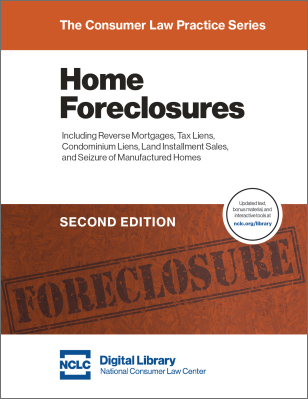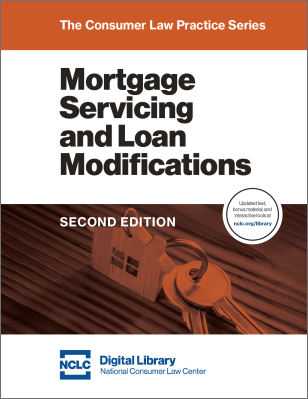A December 20, 2019 Congressional action revived and extended an important protection for struggling homeowners—the Qualified Principal Residence Indebtedness (QPRI) exclusion. This exclusion expired at the end of 2017, but now is extended to January 1, 2021 and applies retroactively to 2018 and 2019. This is significant news for any homeowner now receiving a 1099 form from their mortgage lender for the 2019 tax year, anyone considering a mortgage loan modification in 2020, and even anyone who filed a tax return for the 2018 tax year where that return included income from home mortgage loan forgiveness.
The QPRI Exclusion and the December 20, 2019, Congressional Action
When the principal amount of a homeowner’s mortgage debt is partially or fully forgiven through a short sale, loan modification or otherwise, the amount forgiven is included in a taxpayer’s gross income, triggering a potential hefty tax liability. The QPRI exclusion allows a taxpayer to exclude up to $2 million of the forgiven debt related to a decline in the value of the residence or to the financial condition of the taxpayer. See 26 U.S.C. § 108(a)(1)(E), as revived and extended by the Further Consolidated Appropriations Act of 2020, Public Law 116-94, div. Q, Taxpayer Certainty and Disaster Relief Act of 2019, tit. I, subtit. A, § 101 (116th Cong. Dec. 20, 2019), available at https://www.congress.gov/bill/116th-congress/house-bill/1865/text, which became law on December 20, 2019.
In late January or early February 2020, a homeowner whose mortgage principal was forgiven in part or in full in 2019 might receive a 1099 form that is also reported to the IRS. This form includes what the lender claims is the amount of the forgiven debt, and should only include principal that is forgiven—not forgiven interest and not reduced monthly payments due to an extension on the term of the mortgage loan. If the QPRI exclusion applies, the homeowner does not have to report this forgiven principal as taxable income on their tax returns.
The exclusion only applies to the consumer’s main home. If the debt is cancelled as part of a bankruptcy filing, the bankruptcy exclusion applies to exclude the forgiven debt from income, instead of the QPRI exclusion. The taxpayer can opt to exclude the cancelled debt from income under the insolvency exclusion, but only if the taxpayer was insolvent immediately before and after the cancellation of debt.
The extension applies to debt discharged before January 1, 2021 and is retroactive to forgiven debt since the beginning of 2018. (Existing law already protects discharges prior to January 1, 2018.) Thus a homeowner whose 2018 tax return included forgiven mortgage loan principal as taxable income can file an amended return to exclude the income and obtain a refund or reduce taxes still owed. Amended tax returns form 2018 should be filed as soon as possible, but not later than April 15, 2022. The QPRI exclusion also will apply to forgiven debt subject to a written agreement entered into before January 1, 2021, even if the actual discharge takes place at a later date. This change in the law should be considered in evaluating any future loan modification of the mortgage loan on a homeowner’s principal residence.
IRS Instructions on Application of the QPRI and Insolvency Exclusions
To report that all or part of a taxpayer’s canceled debt is excluded from income because it is QPRI that was canceled subject to an arrangement entered into and evidenced in writing before 2021, attach Form 982 to the taxpayer’s federal income tax return and check the box on line 1e. On line 2 of Form 982, include the amount of canceled QPRI. If the taxpayer continues to own the home after a cancellation of QPRI, the home’s basis must be reduced. If the taxpayer instead opts for the insolvency exclusion, the taxpayer uses line 1b instead of line 1e. See IRS Publication 4681, Canceled Debts, Foreclosures, Repossessions and Abandonments (for Individuals) (Jan. 14, 2019).
IRS Publication 4681 provides instructions for filing 2018 tax returns, not 2019, and it has not been updated to provide that the QPRI exclusion has been extended. But the publication still remains helpful. IRS Publication 4681 also includes instructions about the insolvency exclusion and also at page 6 an insolvency worksheet that helps taxpayers determine if they are insolvent.
Important Warning
Unless an attorney advising a client considers her or himself competent to act as a tax advisor, the attorney should instruct any client, where there are tax implications to a home loan modification, to obtain the advice of a competent tax attorney or tax accountant. The information in this article cannot replace the advice of a competent tax attorney when considering an individual’s unique circumstances as to the tax implications of forgiveness of home mortgage debt.
For More Information
For the full text of the qualified principal residence indebtedness exclusion extender see Further Consolidated Appropriations Act of 2020, Public Law 116-94, div. Q, Taxpayer Certainty and Disaster Relief Act of 2019, tit. I, subtit. A, § 101 (116th Cong. Dec. 20, 2019), available at https://www.congress.gov/bill/116th-congress/house-bill/1865/text. For a more detailed discussion on qualified principal residence indebtedness, see NCLC’s Home Foreclosures § 10.7.4.7.1. In addition, § 10.7 examines other tax consequences of a foreclosure sale, and the rest of Chapter 10 explains other issues arising after a foreclosure sale. See also NCLC’s Mortgage Servicing and Loan Modifications § 6.6.1.



